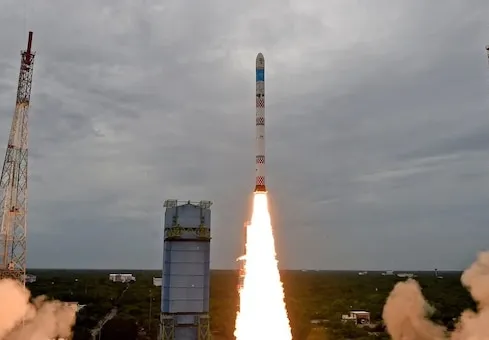The countdown to the launch of India’s GPS satellite begins.
An Indian Space Research Organization (ISRO) official said the countdown to the launch of India’s first second-generation navigation satellite NVS-01 by the Geosynchronous Satellite Launch Vehicle (GSLV) rocket on Monday morning began at 7:12 am on Sunday.
Interestingly, for the first time, the original rubidium atomic clock developed by ISRO’s Space Applications Center (SAC) in Ahmedabad will be flown in NVS-01.
Simply put, NavIC stands for Navigation with Indian Constellation (previously long squiggly as Indian Regional Navigation Satellite System IRNSS), similar to US GPS, Russia’s Glonass and Galileo in Europe, and China’s Beidou.
A fully developed NavIC system consists of seven satellites in geosynchronous / geosynchronous orbits. It provides real-time positioning and timing services in India and within an area of about 1,500 km on the Indian mainland.
According to ISRO, the GSLV-F12 triple rocket with a height of 51.7 meters and a take-off mass of 420 tonnes and a payload of 2,232 kg is scheduled to lift off from the NVS-01 navigation satellite at 10.42 am on Monday in the second launch. Pad of Sriharikota rocket. Port in Andhra Pradesh.
After about 19 minutes of flight, the rocket will transfer the satellite to geosynchronous orbit (GTO), from where it will be transported by firing the onboard engines.
ISRO said NVS-01 is the first of the second generation satellites designed for navigation services.
The 12-mission satellite will be powered by two solar panels capable of producing up to 2.4 kilowatts of power and a lithium-ion battery during the eclipse.
The NVS Satellite Series maintains and enhances NavIC with enhanced features.
This series includes payloads that operate on L1, L5 and S-bands, thus extending their services.
The L1 navigation frequency is popular for providing location, navigation and timing (PNT) services to civil users and for interoperability with GNSS signals.
Be that as it may, ISRO used imported atomic clocks in all the nine navigation satellites it launched earlier.
Each satellite carried three atomic clocks.
The NavIC satellites were said to be doing well until three clocks of IRNSS-1A – the first satellite – failed.
ISRO sources had earlier told IANS that some atomic clocks were not working properly. Clocks are used to accurately determine time and place.




